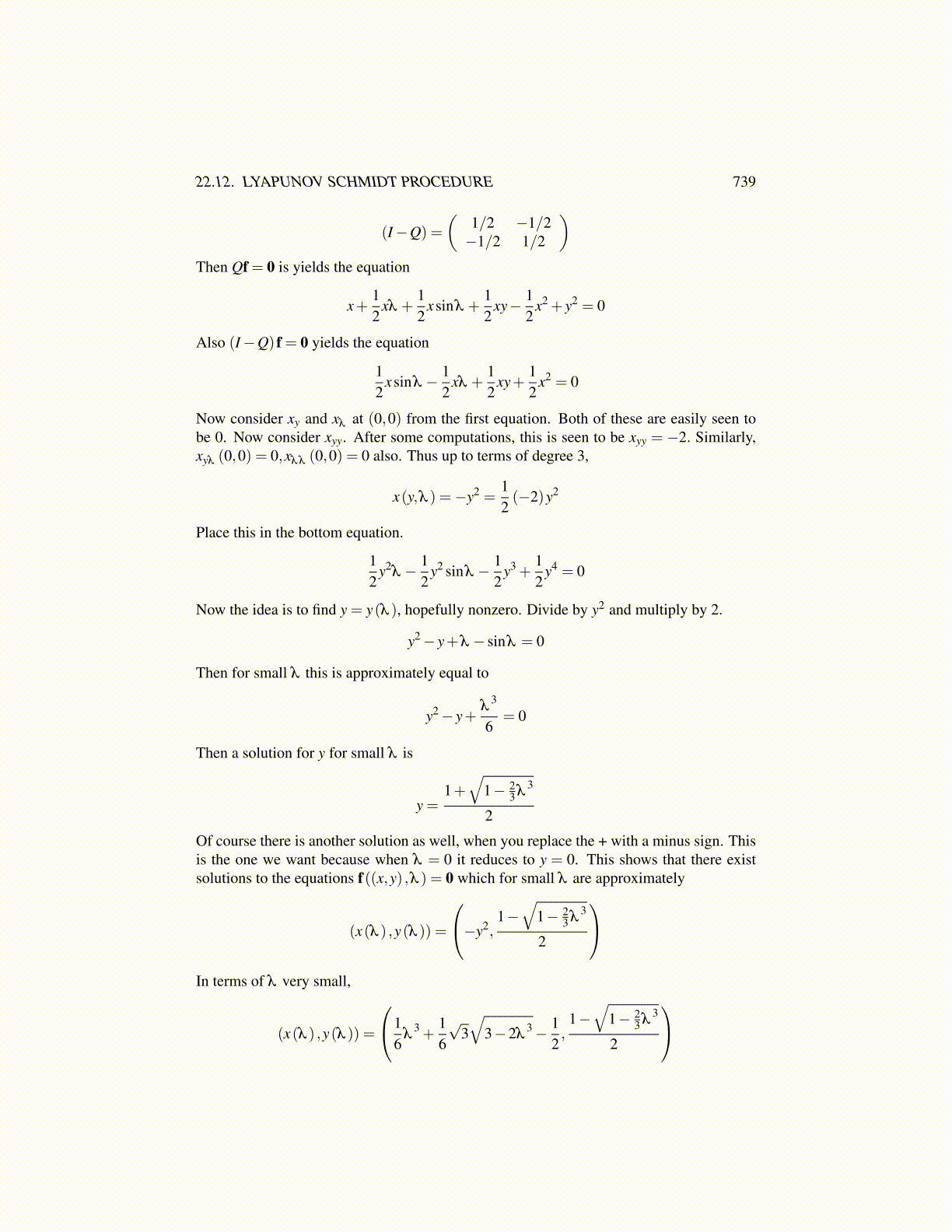
22.12. LYAPUNOV SCHMIDT PROCEDURE 739
(I−Q) =
(1/2 −1/2−1/2 1/2
)Then Qf = 0 is yields the equation
x+12
xλ +12
xsinλ +12
xy− 12
x2 + y2 = 0
Also (I−Q) f = 0 yields the equation
12
xsinλ − 12
xλ +12
xy+12
x2 = 0
Now consider xy and xλ at (0,0) from the first equation. Both of these are easily seen tobe 0. Now consider xyy. After some computations, this is seen to be xyy = −2. Similarly,xyλ (0,0) = 0,xλλ (0,0) = 0 also. Thus up to terms of degree 3,
x(y,λ ) =−y2 =12(−2)y2
Place this in the bottom equation.
12
y2λ − 1
2y2 sinλ − 1
2y3 +
12
y4 = 0
Now the idea is to find y = y(λ ), hopefully nonzero. Divide by y2 and multiply by 2.
y2− y+λ − sinλ = 0
Then for small λ this is approximately equal to
y2− y+λ
3
6= 0
Then a solution for y for small λ is
y =1+√
1− 23 λ
3
2
Of course there is another solution as well, when you replace the + with a minus sign. Thisis the one we want because when λ = 0 it reduces to y = 0. This shows that there existsolutions to the equations f((x,y) ,λ ) = 0 which for small λ are approximately
(x(λ ) ,y(λ )) =
−y2,1−√
1− 23 λ
3
2
In terms of λ very small,
(x(λ ) ,y(λ )) =
16
λ3 +
16
√3√
3−2λ3− 1
2,
1−√
1− 23 λ
3
2